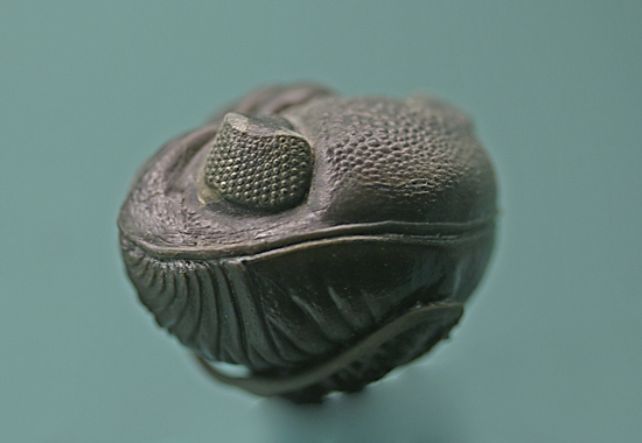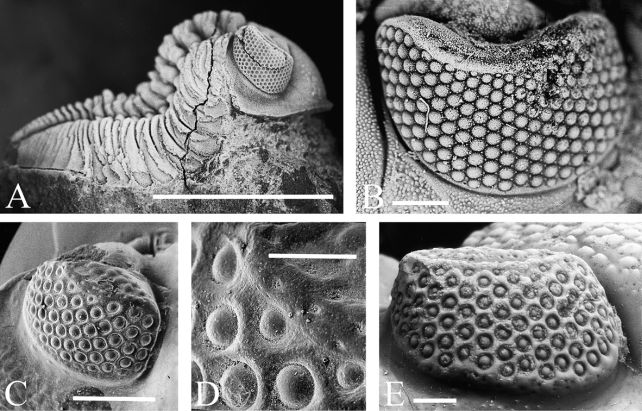[ad_1]
Imaginative and Prophetic in Trilobites: Insights into Historic Eye Constructions
Nature has employed quite a few progressive decisions all the time challenges all through historical past, and that is true in relation to the evolution of creativity and clairvoyance. Among the many first examples of adverse eyes, a specific materials was used to focus softly, materials not current in residing organisms. Trilobites, an extinct group of animals that lived about 250 million years in the past, had eyes made out of calcite, a type of onerous glass. This distinctive attribute presents helpful particulars about how these historic creatures perceived the world round them.
The success of the trilobites
Trilobites thrived for about 300 million years earlier than their eventual extinction. The detailed fossil file of a number of trilobite physique fashions signifies their nice success in all this expertise. As a result of their eyes are made out of calcite, they’re sometimes exquisitely preserved in these fossils, permitting scientists to have a look at their distinctive visible constructions.

The compound eyes of trilobites
From examination of the fossilized lenses, it’s evident that trilobites possessed compound eyes similar to these of bugs. These eyes have been composed of teams of photoreceptive elements referred to as ommatidia, every outfitted with photoreceptors and lenses. The lenses themselves are made out of calcite, which is evident in its pure type and could be simply noticed to be detected by photoreceptors. Whereas trilobites could not have had as a lot creativity and spatial, prescient creativeness as bugs, they have been terribly delicate with motion.
The various kinds of trilobite eyes
Trilobites had three completely completely different eye shapes. The oldest and commonest alternative is named holocroal, by which small ommatidia have been lined by a single corneal membrane, with adjoining lenses in speedy contact with one another. The abathochroal eye, discovered solely throughout the household Eodiscidae, had small lenses lined by a skinny cornea. Lastly, the schizochroal eye, attribute of the suborder Phacopina, consisted of bigger lenses that had extensively separated and had particular person corneas. Scientists consider these schizochroal eyes have been terribly specialised.

Calcite and birefringence
Calcite presents some challenges because of its sturdy birefringent properties. Birefringence refers back to the splitting of daylight into two beams, every of which rotates at a singular fee, leading to a double picture. This phenomenon turns into extra problematic for trilobites with bigger schizochroal eyes as a result of the inflexible crystals can’t regulate their focus to counteract the birefringence. To compensate for this, scientists have found that schizochroic eyes have a double lens improvement. Because of this the lens consists of two layers, every with a singular refractive index, which corrects for birefringence. This double-lens improvement idea was apparently invented independently by mathematicians René Descartes and Christian Huygens within the seventeenth century, unaware that trilobites had used this method lengthy earlier than them.

Unraveling the intricacies of Trilobite Imaginative and prescient
Regardless of our understanding of the completely different constructions of trilobite eyes, many questions referring to their effectivity stay unanswered. Remarkably, the schizochroal eye, with its distinctive improvement, leaves scientists intrigued as to the way it works. It’s unclear whether or not it functioned in the identical means as the opposite eyes present in some bugs and crustaceans or whether or not it had a primarily completely different mechanism. Newest analysis has revealed that schizochroal eyes are way more sophisticated than beforehand acknowledged, with every lens defending a small compound eye of its personal, forming a type of hyper-eye. Moreover, a 2019 examine challenges the belief that calcitic corneas are intrinsic decisions and implies that such glass eyes might not be specialised as beforehand assumed. Due to this fact, our understanding of imaginative and prescient trilobites continues to evolve, providing up to date insights and avenues for additional exploration.
Conclusion
The existence of widespread trilobite eyes from calcite offers a glimpse into the seen world of these legendary creatures. With their compound eye constructions and distinctive variations of birefringence, trilobites illustrate the extraordinary choice and ingenuity of decisions pure to the challenges of creativity and clairvoyance. Regardless of the gaps in our data, ongoing analysis continues to elucidate the intriguing complexities of imaginative and prescient trilobites and their significance throughout the evolutionary historical past of seen methods.
Regularly Requested Questions (FAQ)
1. What have been trilobites?
Trilobites have been a herd of extinct marine arthropods that lived for about 300 million years through the Paleozoic interval. They possessed a misleading exoskeleton and fairly just a few physique sizes and types.
2. What are trilobites’ eyes made from?
Trilobite eyes are created from a crystalline materials often often called calcite. This distinctive characteristic has allowed their eyes to be preserved all through the fossil file.
3. How did trilobite eyes work?
The eyes of trilobites have been composite in nature, consisting of clusters of photoreceptive elements referred to as ommatidia. Every ommatidium had its personal photoreceptors and lenses, which allowed the trilobites to detect slights and actions. His creativity and clairvoyance apparently emphasised the sensitivity of motion over excessive spatial alternative.
4. What have been the assorted eye shapes of trilobites?
Trilobites had three main kinds of eyes: holochroal, abathochroal, and schizochroal. Holochroal eyes had small ommatidia lined by a single corneal membrane, whereas abathochroal eyes had small lenses lined by a skinny cornea. Schizochroal eyes have been bigger, extensively spaced lenses with distinctive corneas and have been regarded as terribly specialised.
5. How did trilobites overcome the birefringent properties of calcite?
Calcite, being birefringent, introduced a problem to trilobites with bigger eyes. To compensate for this, schizochroal eyes had a layered twin lens improvement with quite a few refractive indices, successfully correcting birefringence and decreasing ghosting attributable to the properties of the glass.
6. What present discoveries have been made concerning the imaginative and prescient trilobites?
A latest examine revealed that schizochroic eyes have been rather more sophisticated than beforehand thought, with every lens defending a small compound eye of its personal, forming what scientists name a hyper-eye. Moreover, the analysis has questioned the distinctive nature of calcitic corneas, suggesting that cupped eyes might not be as distinctive to trilobites as beforehand believed.
For extra data, see this hyperlink
[ad_2]
To entry extra data, kindly discuss with the next link
